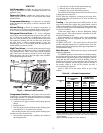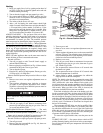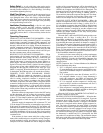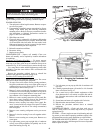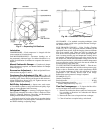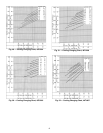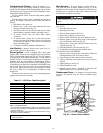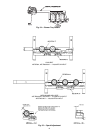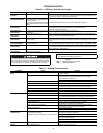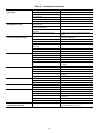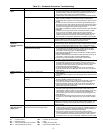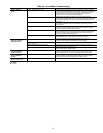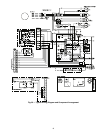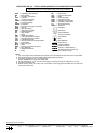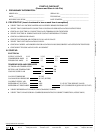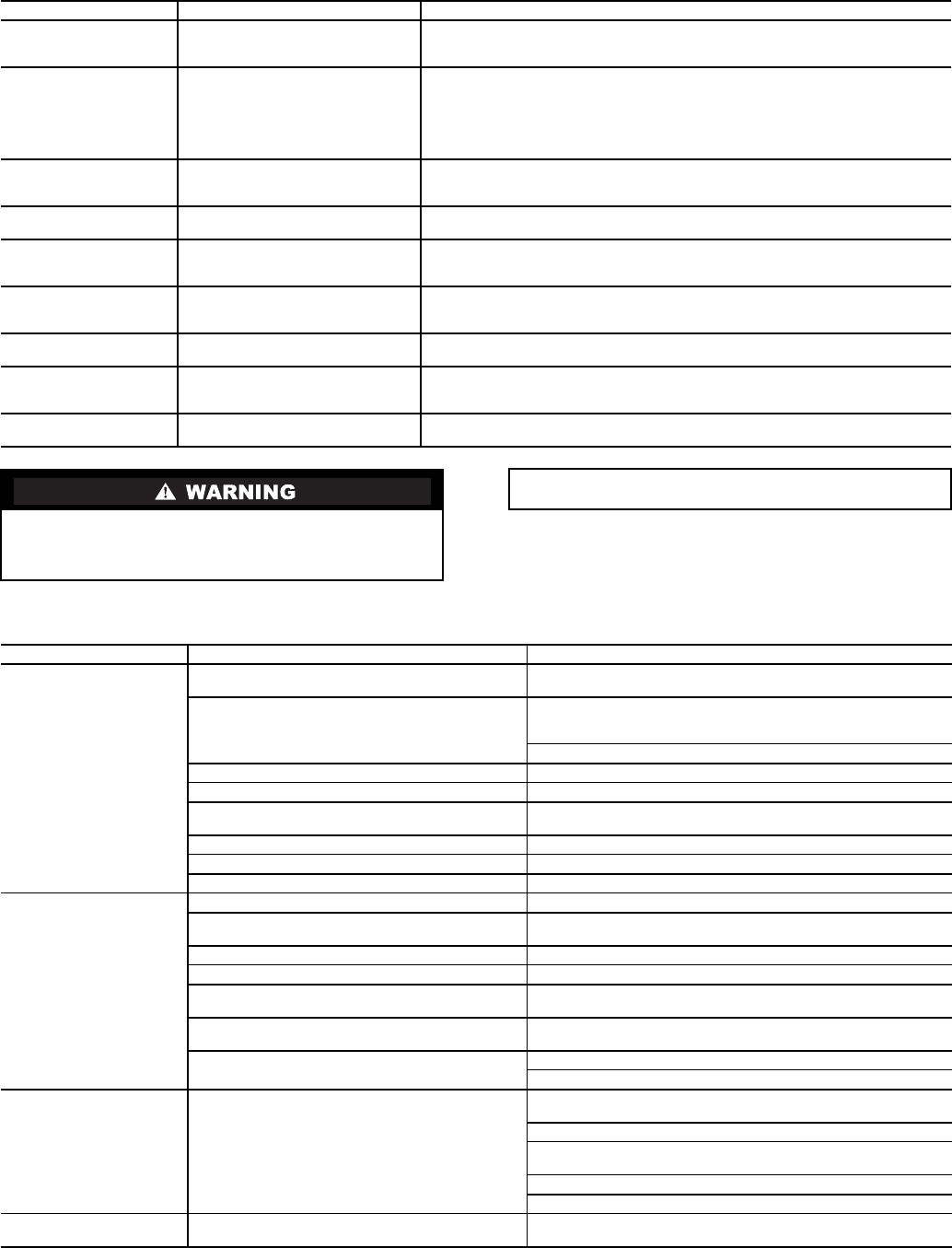
45
TROUBLESHOOTING
Table 32 — LED Error Code Service Analysis
LEGEND
Table 33 — Heating Service Analysis
SYMPTOM CAUSE REMEDY
Hardware failure.
(LED OFF)
Loss of power to control module (IGC). Check 5 amp fuse on IGC, power to unit, 24-v circuit breaker, and transformer. Units
without a 24-v circuit breaker have an internal overload in the 24-v transformer. If the
overload trips, allow 10 minutes for automatic reset.
Fan ON/OFF delay
modified (LED/FLASH)
High limit switch opens during heat
exchanger warm-up period before fan-
on delay expires.
Limit switch opens within three minutes
after blower-off delay timing in Heating
mode.
Ensure unit is fired on rate and temperature rise is correct.
Ensure units’ external static pressure is within application guidelines.
Limit switch fault.
(LED 2 flashes)
High temperature limit switch is open. Check the operation of the indoor (evaporator) fan motor.
Ensure that the supply-air temperature rise is in accordance with
the range on the unit nameplate.
Flame sense fault.
(LED 3 flashes)
The IGC sensed flame that should not
be present.
Reset unit. If problem persists, replace control board.
4 consecutive limit
switch faults.
(LED 4 flashes)
Inadequate airflow to unit. Check operation of indoor (evaporator) fan motor and that supply-air temperature rise
agrees with range on unit nameplate information.
Ignition lockout.
(LED 5 flashes)
Unit unsuccessfully attempted ignition
for 15 minutes.
Check ignitor and flame sensor electrode spacing, gaps, etc. Ensure that flame sense
and ignition wires are properly terminated. Verify that unit is obtaining proper amount
of gas.
Induced-draft motor
fault. (LED 6 flashes)
IGC does not sense that induced-draft
motor is operating.
Check for proper voltage. If motor is operating, check the speed sensor plug/IGC Ter-
minal J2 connection. Proper connection: PIN 1— White, PIN 2 — Red, PIN 3 — Black.
Rollout switch fault.
(LED 7 flashes)
Rollout switch has opened. Rollout switch will automatically reset, but IGC will continue to lock out unit. Check gas
valve operation. Ensure that induced-draft blower wheel is properly secured to motor
shaft. Reset unit at unit disconnect.
Internal control fault.
(LED 8 flashes)
Microprocessor has sensed an error in
the software or hardware.
If error code is not cleared by resetting unit power, replace the IGC.
If the IGC must be replaced, be sure to ground yourself to dissi-
pate any electrical charge that may be present before handling
new control board. The IGC is sensitive to static electricity and
may be damaged if the necessary precautions are not taken.
IMPORTANT: Refer to Table 33 — Heating Service Analysis
for additional troubleshooting analysis.
IGC —
Integrated Gas Unit Controller
LED —
Light-Emitting Diode
PROBLEM CAUSE REMEDY
Burners will not
ignite.
Misaligned spark electrodes. Check flame ignition and sensor electrode positioning.
Adjust as needed.
No gas at main burners. Check gas line for air purge as necessary. After purging
gas line of air, allow gas to dissipate for at least 5 minutes
before attempting to relight unit.
Check gas valve.
Water in gas line. Drain water and install drip leg to trap water.
No power to furnace. Check power supply, fuses, wiring, and circuit breaker.
No 24 v power supply to control circuit. Check transformer. Transformers with internal overcur-
rent protection require a cool down period before resetting.
Miswired or loose connections. Check all wiring and wirenut connections.
Burned-out heat anticipator in thermostat. Replace thermostat.
Broken thermostat wires. Run continuity check. Replace wires, if necessary.
Inadequate heating.
Dirty air filter. Clean or replace filter as necessary.
Gas input to unit too low. Check gas pressure at manifold. Clock gas meter for input. If too
low, increase manifold pressure, or replace with correct orifices.
Unit undersized for application. Replace with proper unit or add additional unit.
Restricted airflow. Clean filter, replace filter, or remove any restrictions.
Blower speed too low. Use high speed tap, increase fan speed, or install
optional blower, as suitable for individual units.
Limit switch cycles main burners. Check rotation of blower, thermostat heat anticipator settings,
and temperature rise of unit. Adjust as needed.
Too much outdoor air. Adjust minimum position.
Check economizer operation.
Poor flame
characteristics.
Incomplete combustion (lack of Check all screws around flue outlets and burner
combustion air) results in: compartment. Tighten as necessary.
Aldehyde odors, CO, sooting flame, or floating flame. Cracked heat exchanger.
Overfired unit — reduce input, change orifices, or adjust
gas line or manifold pressure.
Check vent for restriction. Clean as necessary.
Check orifice to burner alignment.
Burners will not
Unit is locked into Heating mode for a Wait until mandatory one minute time period has
turn off.
one minute minimum. elapsed or reset power to unit.



